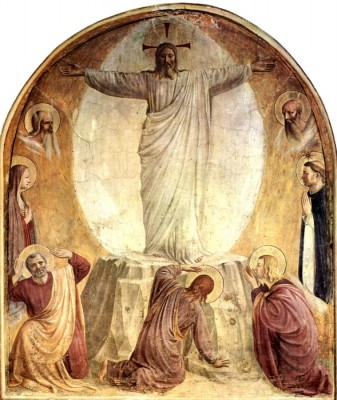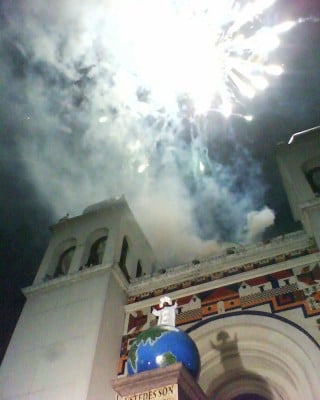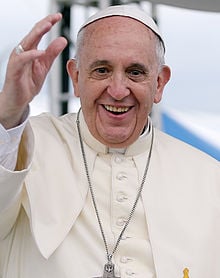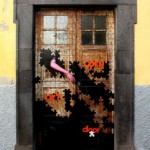 Transfixed by joy, Peter is speechless – and then he stammers, wishing the moment could last forever. Jesus, from whose mouth he has often heard words of Moses and Elijah, suddenly appears to him surrounded by them. They are with, and in, Jesus, and Jesus is one with them. The aura surrounding them – is it bursting from Peter’s heart? is it within Peter, or from heaven? Is there a difference between these possibilities? Peter is in pure bliss.
Transfixed by joy, Peter is speechless – and then he stammers, wishing the moment could last forever. Jesus, from whose mouth he has often heard words of Moses and Elijah, suddenly appears to him surrounded by them. They are with, and in, Jesus, and Jesus is one with them. The aura surrounding them – is it bursting from Peter’s heart? is it within Peter, or from heaven? Is there a difference between these possibilities? Peter is in pure bliss.
Pure bliss is nearly impossible to describe. And, though we are urged to follow our bliss, it’s hard to imagine what bliss would be, except an answer to our inarticulate longings. Perhaps that is why, in stories, transfiguring moments arrive as unexpected joy. We cannot, after all, make them happen, but when they occur, we never, ever, forget them.
Trisha Thomas, a friend who lives in Rome and is an AP reporter assigned to cover the Vatican, wrote last week about the Vatican Pontifical Council of Culture’s plenary on Women’s Cultures. The Vatican , attempting to ‘understand feminine . . . dignity, identity, liberty, violence, politics, power . . .’ advertised its meeting using a very well made-up movie star as a promo, but then declared that ‘plastic surgery is like a burqa made of  flesh.’ Most of the protest was against the movie star, but I’ve been thinking about the burka comparison. Burkas attempt to hide feminine attractiveness, whereas plastic surgery attempts to enhance it. So it seems to me that burkas are more comparable to nun’s habits, than to facelifts and body tucks. The movie star protested, her husband is a plastic surgeon and she argued for ‘what makes a woman feel better about herself’.
flesh.’ Most of the protest was against the movie star, but I’ve been thinking about the burka comparison. Burkas attempt to hide feminine attractiveness, whereas plastic surgery attempts to enhance it. So it seems to me that burkas are more comparable to nun’s habits, than to facelifts and body tucks. The movie star protested, her husband is a plastic surgeon and she argued for ‘what makes a woman feel better about herself’.
Both burka culture and plastic surgery culture promise women they will feel better about themselves, and that bliss may occur as a result, a deep emotional satisfaction that will be gained, burka culture says, when a woman hides her body and waits till a man marries her to become beautiful in his eyes only. The man will marry her for other reasons; money, family, brideprice; and when the burka is removed, there may or may not be bliss, but because of the burka there is a possibility of paradise, eternal bliss.
Plastic surgery culture says deep emotional satisfaction will be gained when the world looks at the ‘new’ face and body and pronounces them beautiful. Then desirability, which may have faded or may have felt absent, will increase. But in plastic surgery, as in burka culture, what is desirable and beautiful, in women, lives in their flesh but is not their spirit.
 The transfiguration story reveals exceptional beauty in Jesus because of the capacity of his spirit, which expands to encompass all time and bring into a golden eternal moment gorgeous spirits from across centuries, all blissful in one another, all real in their desire to be one.
The transfiguration story reveals exceptional beauty in Jesus because of the capacity of his spirit, which expands to encompass all time and bring into a golden eternal moment gorgeous spirits from across centuries, all blissful in one another, all real in their desire to be one.
It is not Jesus’ six pack abs that draw Moses and Elijah to him, not his air-brushed complexion and designer stubble, not his eye job or his neatly trimmed beard, that draw Peter and his companions in awe. And it is not beauty of the flesh, hidden or revealed, that draws Jesus to people.
If only the Vatican could acknowledge its own fascination with flesh – how elegantly and eye-catchingly the Pope is dressed, and how ordinary he would be to the eye without his vestments; how breathtaking the college of cardinals, red capes swishing in the procession, is, and how alluring. Perhaps the Vatican would argue with me that they intend to inspire different desires than the carnal. But why then, so many cults of adoration? Why the movie-star posed photos of cardinals, available to the faithful? Aren’t the lines of desire blurred in all this?
Pope Francis has followed the pathway of beauty of spirit ,  shown to him by St. Francis, with a firm step and among a cheering throng. Would that, for women, the Vatican could espouse a similar form of beauty, the alluring grace of intelligence, kindness, and courage for justice, present in the spirits of women, transfiguring them in occasions when a modern woman spiritual leader, like Rev. Sally Bingham, becomes one with Juliana of Norwich in the eyes of her followers, when someone in Burma sees the Buddha in the presence of Aung Sang Suu Kyi, when a young Moslem girl sees the Prophet Muhammed in deep conversation with Malala Yousefzai.
shown to him by St. Francis, with a firm step and among a cheering throng. Would that, for women, the Vatican could espouse a similar form of beauty, the alluring grace of intelligence, kindness, and courage for justice, present in the spirits of women, transfiguring them in occasions when a modern woman spiritual leader, like Rev. Sally Bingham, becomes one with Juliana of Norwich in the eyes of her followers, when someone in Burma sees the Buddha in the presence of Aung Sang Suu Kyi, when a young Moslem girl sees the Prophet Muhammed in deep conversation with Malala Yousefzai.
Instead, the Vatican is still fixated on getting the rules of the flesh, notably women’s flesh, articulated correctly. And in attempting to do this, the Vatican is working to weave a burka of prejudicial attitudes in which womens’ lives will continue to be encased, as they have been for thousands of years in the West as much as in Moslem culture.
is working to weave a burka of prejudicial attitudes in which womens’ lives will continue to be encased, as they have been for thousands of years in the West as much as in Moslem culture.
As Jesus, who claimed the freedom to break the cleanliness laws with abandon, in doing so became seen for the holiness in his spirit, so women who claim the freedom to do with their own bodies what they wish to do, to cover them with tattoos or with burkas, to bare them with revealing clothes or glimpsed ankles, to decorate them to their own delight, are then be able to be seen for the spirit that moves all that they do with their flesh. Moments of holiness. These – not regulations – and not media-dictated standards of beauty of body or behavior – are the bliss we all seek.
__________________________________________________________
Illustrations:
1. Trasnfiguration, by Fra Angelico. 1450. Florence. Vanderbilt Divinity School Library, Art in the Christian Tradition.
2. Italian Actress Nancy Brilli, in Vatican Ad for its Plenary on Women. Mozzarella Momma blog.
3. Transfiguracion del Divino Salvador el Mundo, Metropolitan Cathedral, San Salvador, El Salvador. Vanderbilt Divinity School Library, Art in the Christian Tradition.
4. Pope Francis. Wikipedia, Pope Francis page photo.
5. Rev. Sally Bingham, Interfaith Power and Light, Staff page photo
6. Malala Yousefzai. Wikipedia photo.











